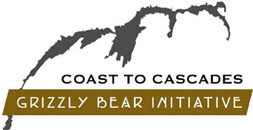While we may think of the grizzly bear as an iconic BC species, it’s found around the world. In fact it has the third largest natural distribution of any mammal (after wolves and humans). Grizzly bears (or brown bears as they’re called outside North America) are found across Russia, Northeast Asia, Europe and the Middle East.
Dr. Bruce McLellan, has had the opportunity to learn about many of these populations as co-chair of the Bear Specialist Group with the International Union for Conservation of Nature (IUCN). Globally he says brown bear populations are doing fine, listed by the IUCN as a species of Least Concern. However, this ignores the fact that on a more regional level many brown bear populations are in serious danger.
“While globally populations are stable many smaller populations are close to extinction. Once lost they’ll be almost impossible to revive.” Of key concern are brown bear populations in the Gobi Desert, the Spanish Pyrenees and Central Italy, each with populations under 100 bears. According to Bruce these populations are extremely physically and genetically isolated, with no connection to a wider source population.
In BC we face a similar situation. Province wide grizzly bears are doing well however, at a local level, bears in southern BC are under threat. In the Garibaldi-Pitt and Stein-Nahatlatch grizzly bears are in serious decline, in the Northern Cascades they’re almost gone. According to Bruce there are number of factors at play. In Garibaldi-Pitt it’s a lack of high energy food sources, such as berries or salmon. In other places like the Stein-Nahatlatch the populations are extremely isolated, withlittle migration from other areas.
Some populations in Southern BC however, are doing very well, with populations in the Squamish-Lillooet area growing in recent years. Bear populations are diverse and so should be our responses. In areas where bear populations are under threat more needs to be done to protect them. Where they are healthy, the most important thing is reducing human-bear conflicts. For Bruce getting humans to know how to share territory with bears is vital. “Around Squamish and Lilooet, they’re going to be more bears in the future. People need to be conscious and learn how to live with them.”

